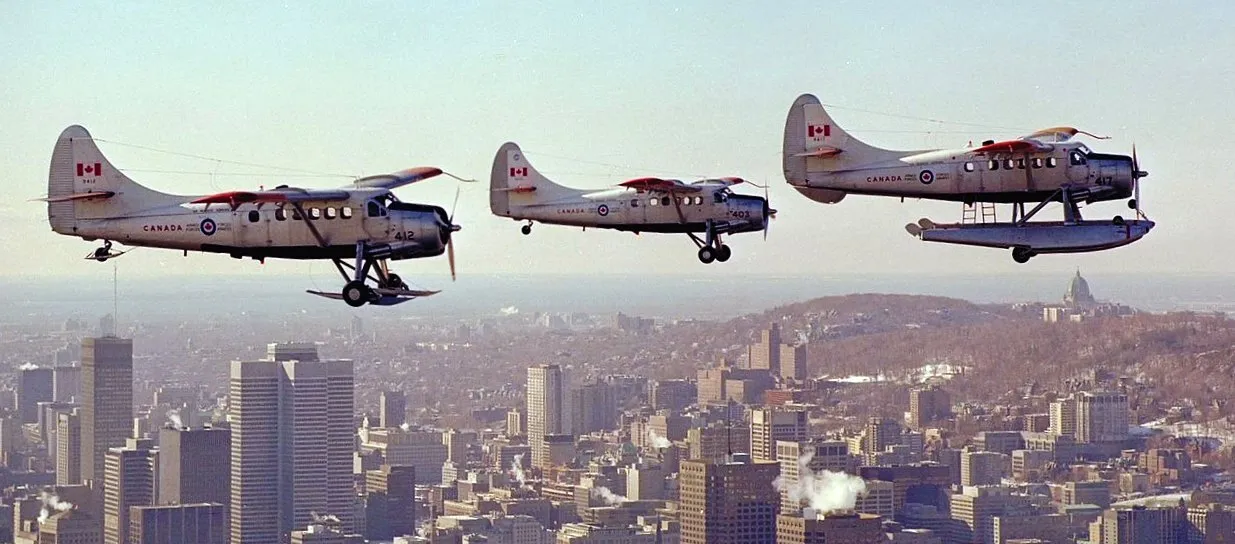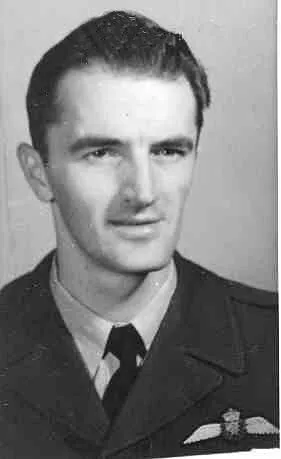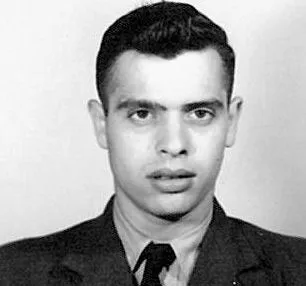de Havilland Canada Otter

de Havilland CC-123 Otter formation, No. 438 Squadron, RCAF, over Montreal, Quebec.
The de Havilland Canada DHC-3 Otter is a single-engined, high-wing, propeller-driven, short take-off and landing (STOL) aircraft. It was conceived to be capable of performing the same roles as the earlier and highly successful Beaver, including as a bushplane, but is overall a larger aircraft.
The DHC-3/CC-123/CSR-123 Otter was used until 1980 by the RCAF and its successor, CF Air Command. It was used in Search and Rescue, as the "CSR" denotes Canadian Search (and) Rescue (type 123) and as a light utility transport, "CC" denoting Canadian Cargo. During the Suex Crisis, the Canadian government provided assistance to the UN Emergency Force (UNEF). HMCS Magnificent carried 4 Otters from Halifax to Port Said, Egypt, early in 1957, with all four flying off unassisted while the ship was at anchor. This was the only occasion when RCAF fixed wing aircraft operated from a Canadian warship. It was also operated on floats on water and skis for winter operations on snow. The EDO floats also had wheels for use on runways (amphibious). It was used as army support dropping supplies by parachute, and also non-parachute low-speed, low-altitude air drops, to support the Canadian Army on manoeuvres. In the end it was operated by the Primary Air Reserve in Montreal, Toronto, Edmonton and Winnipeg, with approximately 10 aircraft at each base, as well as by the RSU (Regular (Forces) Support Units) at those bases. It was usually flown with a single pilot (Commissioned Officer) in the left seat and a Technical Air Crewman (NCO) in the right seat. The Kiowa helicopter replaced it in Air Reserve squadrons.
Although the Otter found ready acceptance in bush airlines, as in a similar scenario to the DHC-2 Beaver, the US Army soon became the largest operator of the aircraft (184 delivered as the U-1A Otter). Other military users included Australia, and India, but the primary role of the aircraft as a rugged bush plane continues to this day.
An Otter crossed the South Pole in 1957 (see Commonwealth Trans-Antarctic Expedition). The Otter is also popular in the skydiving community and can be found in many dropzones throughout the world. Harold Skaarup web page
CASPIR Aircraft Groups:
RCAF On Strength (70), Canadian Aircraft Losses (5)Otter 3666
Publicity photos taken before deliver in markings of No. 408 (P) Squadron, RCAF Station Rockcliffe, but no record of service with this Squadron. To Goose Bay station flight, coded "QB*666". Used for transport to outlying radar stations, and parachute training with SAR techs. Medivac flight to Povungnituk, Quebec on 10 December 1953. Forced down by weather on lake while returning to Goose Bay, spent the night. Forced landing in Northwest River on 28 September 1955, following engine failure. Towed back to Goose Bay by a USAF boat. Category A crash at 18:54 on 10 April 1956 near Goose Bay. Casued by rapid pitch down when flaps were retracted during air test, wings then failed in negative G. Rapid retraction blamed on metal swarf caught in flap control valve. This crash, and one other similar accident, lead to extensive test program by DHC and the National Research Council. End result was installation of elevator and flap interconnect to all Otters.
1953-03-26 Taken on Strength 2019-08-20
1956-05-15 Struck off Strength Struck off, after Category A damage on 10 April 1956 at Goose Bay. 2019-08-20




 Canadian Virtual War Memorial
Canadian Virtual War Memorial Maple Grove Cemetery, Canada
Maple Grove Cemetery, Canada


 Otter
Otter Wikipedia Otter
Wikipedia Otter Harold A Skaarup Web Page
Harold A Skaarup Web Page